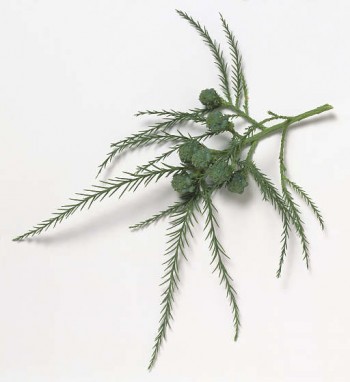
Glyptostrobus, first described in 1873 by Stephan Friedrich Ladislaus Endlicher (1804-1849) is a small genus of conifers in the family Cupressaceae commonly called Chinese water Pine and Chinese swamp cypress, both misnomers, or as æ°´æ¾ (shui song) in the Chinese language and as Thông nuóc, Thuy tùng, or H'ral in Vietnamese. The sole living species is Glyptostrobus pensilis,
The genus formerly had a much wider range, covering most of the Northern Hemisphere, including the high Arctic during the Paleocene and Eocene. The oldest known fossils are late Cretaceous in age, found in North America. It contributed greatly to the coal swamps of the Cenozoic era. It was reduced to its current range before and during the Pleistocene ice ages.
Description. G. pensilis is a medium-sized to large coniferous species of tree, reaching 100 feet (30 m) tall and with a trunk diameter of up to 3 feet (1 m), possibly more.
Distribution. This species is native to subtropical southeastern China, from Fujian province west to southeastern Yunnan, and also very locally in northern Vietnam and Borikhamxai province of eastern Laos, near the Vietnamese border where it typically grows in river banks, ponds and swamps, growing in water up to 24 inches (60 cm) deep. Like the related genus Taxodium, it produces 'cypress knees' when growing in water, thought to help transport oxygen to the roots.
Chinese swamp cypress is nearly extinct in the wild due to over-cutting for its valuable decay-resistant, scented wood, but it is also fairly widely planted along the banks of rice paddies where its roots help to stabilize the banks by reducing soil erosion.